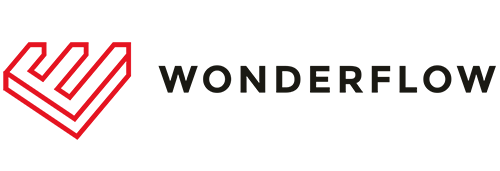You’ve probably heard the term sentiment analysis before, but perhaps never really took much notice of how important it can be for your company.
But you should. The term refers to mining the opinions of your customers. If done properly, sentiment analysis can reveal gold mines inside the thoughts and opinions of your customers.
There are dozens of different ways you can mine customer opinions. Once we’ve explained the perks of sentiment analysis, we’ll show you 10 ways opinion mining can help your business succeed and boost its bottom line.
If you are already putting sentiment analysis into practice, this blog will show you many ways of how to get better results with less effort.
Read on or use the links below to navigate to each section of this article:
- What is Sentiment Analysis?
- Why Mining Opinions is Beneficial
- Why Customers Say Certain Things
- Example Usages of Sentiment Analysis
- Automating Mining & Evaluating Feedback: Sentiment Analysis Software
What is Sentiment Analysis?
What makes sentiment analysis different from other analysis is that it is automatic.
All of the opinions and data that is gathered from your customers is based on the language they use when they talk about your product. So, if they are referring to your product or business in a positive, negative or neutral way, you will know about it through sentiment analysis.
In order to find these opinions, data-miners use a method called Natural Language Processing (NLP). NLP is basically a system that is built to extract opinions from text and tell the difference between all the words, automatically.
Some of the statements that opinion mining will dig for include:

Of course, the algorithms and programs used to mine these opinions are anything but basic.
Some serious computer programming knowledge is needed if you are going to try and attempt it yourself, but we have recommended some software solutions for you at the end of this article.
Why Mining Opinions is Beneficial to Your Company
Sentiment analysis is like having a private detective listening to what your customers are saying—everywhere.
Sure, your customers might give some feedback to your customer service team directly. But they are also going to give their honest opinion on other platforms such as Facebook, discussion forums, Amazon, Twitter… the list really is endless.

The good news is by using sentiment analysis, you can not only track these opinions but harvest them. This will allow you to really take your customer’s feedback on board and improve your product at the same time.
Why Do Customers Say Certain Things?
Ever hear someone say that a text just doesn’t get across what the person was trying to say? You most likely have and it probably led to some confusion or misinterpretation.
Now, imagine the internet is just one big ball of text and everyone is trying their best to get their opinions across correctly.
Advanced sentiment analysis can not only uncover what customers are saying, but why they are saying it.
Wonderflow has created an integrated enterprise solution to help turn the voice of the customer into actions. We help brands discover the “why” behind customer feedback, e.g. “why do customers dislike X feature of product Y?” (learn what industries we serve, and how).
The Overall Insights tab of the Wonderboard shows rating and review insights of a specific product at a glance:
The Useful Reviews tab shows specific, helpful review. From there, key pieces of information are highlighted in each review so brands can quickly identify what customers like and dislike about a product:

This is because the language people are using can be mined to discover their true emotions and the intent in their sentences. With this information, you can gain a real understanding of why customers are saying these things, automatically.
For example, let’s say you’ve done some sentiment analysis and you’ve uncovered a lot of people aren’t happy with your customer support. Here’s an example of the data that was mined:
‘I don’t like their customer support’
and
‘I was on hold for 40 minutes, their customer support service is a nightmare’
The first sentence is a basic example of sentiment analysis. The customer clearly isn’t happy with the support they’ve received, but you haven’t received any more information on what you can do to improve the situation.
But, if you look at the second example, it is clear the customer is frustrated, they were on hold for 40 minutes, and they were dissatisfied with the service. From this piece of information, you are able to deduce a customer’s wait time is way too long. Through further sentiment analysis, you should be able to see if this is a pattern or just an unfortunate one-off, and work on your customer service as a result or your bottom line.
More information on our solution can be found here, or book a demo via the button in the top right of your screen![/vc_column_text][/vc_column][/vc_row][vc_row type=”in_container” full_screen_row_position=”middle” bg_color=”#f3f2f3″ scene_position=”center” text_color=”dark” text_align=”left” overlay_strength=”0.3″ shape_divider_position=”bottom” bg_image_animation=”none” shape_type=””][vc_column column_padding=”padding-3-percent” column_padding_position=”all” background_color_opacity=”1″ background_hover_color_opacity=”1″ column_link_target=”_self” column_shadow=”none” column_border_radius=”none” width=”1/1″ tablet_width_inherit=”default” tablet_text_alignment=”default” phone_text_alignment=”default” column_border_width=”none” column_border_style=”solid” bg_image_animation=”none”][vc_raw_html]JTNDZGl2JTIwc3R5bGUlM0QlMjJoZWlnaHQlM0ElMjA1cHglM0IlMjBiYWNrZ3JvdW5kLWNvbG9yJTNBJTIwcmVkJTNCJTIwd2lkdGglM0ElMjA1NXB4JTNCJTIyJTNFJTNDJTJGZGl2JTNF[/vc_raw_html][vc_column_text css=”.vc_custom_1563206232696{border-radius: 1px !important;}”]
Join hundreds of professionals to learn how you can become more customer-centric.
[/vc_column_text][ninja_form id=”41″][vc_column_text]View our privacy policy for details on use and storage of your personal data[/vc_column_text][/vc_column][/vc_row][vc_row type=”in_container” full_screen_row_position=”middle” scene_position=”center” text_color=”dark” text_align=”left” overlay_strength=”0.3″ shape_divider_position=”bottom” bg_image_animation=”none”][vc_column column_padding=”no-extra-padding” column_padding_position=”all” background_color_opacity=”1″ background_hover_color_opacity=”1″ column_link_target=”_self” column_shadow=”none” column_border_radius=”none” width=”1/1″ tablet_width_inherit=”default” tablet_text_alignment=”default” phone_text_alignment=”default” column_border_width=”none” column_border_style=”solid” bg_image_animation=”none”][vc_column_text]Start Mining: 10 Example Usages of Sentiment Analysis

One of the most exciting things about sentiment analysis is how versatile and far-reaching mining customer’s opinions can be.
The internet is an opinion minefield—being able to access these opinions yourself on a bunch of different platforms is a key advantage for any business looking to improve their products or services.
1. Brand Monitoring
Customers love being heard.
Every time a customer mentions your brand name, you should be listening. Because each time they mention you, it gives your company the chance to get a glimpse of their sentiment towards your brand and your products.
You can do this by watching what customers say about you after you launch a new product or even a certain marketing campaign.
Take Nike’s recent marketing campaign involving controversial National Football League quarterback Colin Kaepernick.
The immediate response from the public when Nike announced Kaepernick was going to be part of their new marketing campaign was overwhelmingly negative:

Source
Customers even started their own hashtag #justburnit in response to the campaign.
But underneath all the negative sentiment was also a wave of positivity that didn’t make the papers:
Positive sentiment for Nike actually increased after the controversial ad was released. In fact, Nike’s overall sales jumped more than 31%.

As the stats show, it pays to listen to all of your customers when it comes to your brand—not just the loudest ones.
2. Improving Your Customer Support
Did you know that more than 25% of customers drop a product or brand after ONE bad customer service experience?
With the rise of social media, forums, and opinions, that one bad experience has the ability to cost your business over and over again.
By being able to track sentiment across the web, you will be able to give your customer service (CX) team a heads up on what might be coming their way. In fact, if an aspect of your product has been widely criticized, your customer support team can even use the opinions to put together an emergency plan to tackle them.
Mining opinions can also help your CX team understand how your customers feel at different stages of the buying journey. This can help them to be more personable with your customers, drive sales, and boost your bottom line.
3. Tracking Your Employees’ Feedback
Mining the opinions of your employees is something a lot of companies overlook.
Let’s say you have a company of 100 people who live, work and breathe your brand…have you ever asked them for their feedback? It’s like having a gold mine in your backyard that you’ve never bothered to dig up.
By analyzing employee surveys and segmenting them, you can weed out key problems in your company and workforce. This allows your employees to be heard, which is crucial for any company.
You will also be able to track their work satisfaction levels and flag urgent problems that need to be addressed in your company.
4. Providing Better Product Analytics
Using sentiment analysis to look at product analytics can help your company keep an eye on what’s working—and what’s not.
By segmenting certain features of your product through analysis, you can create marketing campaigns to target certain groups who may have shown interest in that specific feature. Or better yet, use their sentiment to change a feature that you thought was great—but the customer actually hates.
The best part about tracking product analytics is that when customers give feedback, they really want to give it. They may mention certain additions to a product that you hadn’t thought of that they would love to see.
Sure, a few mentions of an addition to a product on Facebook won’t call for an overhaul. But what happens if your sentiment tracking finds a majority of your customers are asking for it? That’s something worth listening out for.
5. Monitoring Market Research
Are you a new company launching your very first product? Or a company launching a product into a new market for the first time?
If so, monitoring market research is a must. It will provide you with the ability to keep an eye on how your target market is receiving your product in the first weeks, days, or even hours after launch.
This is crucial as being able to change-up your product and iron-out any early problems before your product gets too big can save your company a lot of time and money down the line.
6. Keeping an Eye on Your Competition
This benefit of sentiment analysis will tie in with customers’ perception of your brand compared to your competitors.
By keeping an eye on your brand as well as your direct competitors, you can see how your products or marketing campaigns stack up directly against theirs.

The screenshot above show’s the Pros & Cons area of Wonderflow’s “Wonderboard” in action, comparing feedback analyzed between two competing products.
But how can you capitalize on tracking your competitors? Pounce when they make a mistake.

In the above example of McDonalds vs. Burger King, we can see a massive spike in positive sentiment for Burger King. But at the exact same time, McDonalds was hit with a wave of negative sentiment.
Why?
At the time, McDonalds was subjected to a parody video on Youtube that went viral:
Burger King just happened to launch a heart-wrenching anti-bullying campaign at the exact same time that received a wave of positive sentiment.
7. Tracking User Generated Content
Tracking sentiment in user-generated content can allow you to navigate through the early stages of product development.
When you’ve launched a new product or feature for your company, it’s likely you’ll spend thousands of dollars in customer research to try and figure out if it that product will be successful and a hit with consumers.
So, what if data-mining could help you listen to what customers were saying about your product from the moment it launched?
Finnish outdoor equipment giant Suunto did just that when they launched their Spartan Ultra watch. The kit had a few early technology issues, and customers weren’t shy about sharing their thoughts:


Because the company was able to act on this negative feedback instantly, as well as use it to help tweak the new product, damage to the brand was kept to a minimum.


The key to user-generated content is remembering one thing. If a customer takes the time to write something about your brand, you can bet they want to be heard.
Listen in, change things up, and let people know they’re being heard.
8. Uncovering Brand Influencers
Sure, the average consumer might be boasting about your product but what about social influencers?
A recent study from Twitter found the opinions of influencers can be just as important as a friend’s opinion when it comes to someone making a buying decision.
So much so that nearly 40% of those who participated in the survey said they had bought something just because an influencer had posted about it on Twitter.
Although finding the right influencers can prove to be a challenge, cashing in on this millennial goldmine doesn’t have to be hard.
By tracking sentiment in your industry and searching specific keywords, you can track influencers talking about your product and engage with their fans as well.
9. Social Media Monitoring
Social media monitoring is another way businesses are currently using sentiment analysis to keep track of what customers are saying.
By digging into all of your customer’s social media opinions about your brand, you are also able to automatically categorize issues of urgency so you can deal with them straight away.
Think about it, if 3,000 customers mention your brand overnight—that’s a lot of tweets to go through before your morning coffee.
But with sentiment analysis, the data can be automatically put into categories of positive, neutral, and negative. This can allow your customer service team to put out urgent fires from disgruntled customers before you say thanks to your happier ones.
Take a look at this example of a Twitter sentiment analysis of major U.S airlines over a month in 2015:

The graph is an interesting example because shows us two things; a major weather event, and how each of the airlines dealt with it in the eyes of the customer.
It’s interesting to note that late flights were the main issue for only a single airline, meaning the rest were dragged through the Twitter mud for their lack of customer service.
The airlines that received negative customer feedback due to their customer service might look to implement better strategies to deal with catastrophic weather events.
Advanced sentiment analysis would also be able to look further into why they were unhappy with their customer service, which could help the airline to build an excellent plan of attack for the next time a storm strikes.
10. Managing a Crisis Better
There’s nothing worse than discovering a problem or PR disaster before it’s too late.
Because sentiment analysis allows you to track opinions in real-time, you can evaluate if there is a sudden plunge in negativity towards your brand. Your company should set up some simple warning bells that alert you to an imminent PR disaster, and hose it down before it explodes.
This could be anything from an increase in mentions on social media (always be wary) or a sudden peak in negativity across another channel your sentiment analysis is monitoring (ex. Amazon, Yelp, Google, or other review sites).
By monitoring these fires and tackling them early you show your customers that you are dealing with the situation swiftly and help to inject some positivity back into the situation.
The earlier you can dive into crisis mode, the better. It can save your brand from disaster and help you build better crisis management techniques along the way.

Sentiment Analysis Software: Automating Mining & Evaluating Feedback
To get the most out of mining your customer’s data, the best thing to do is to invest in a specialized platform that does that hard work for you.
A data-mining company will cover all of the basics of scoping out online opinion about your product and brand. But, they will also be able to weed out hidden and complex opinions and statements about your brand that basic mining won’t be able to detect.
Let’s say your product is sold to people who speak different languages and some of those customers use slang words such as “fab product” or “sick brand”’. D.I.Y data-mining won’t pick these opinions up, but advanced approaches will enable you to collect and act on these customer thoughts.
Wonderflow
A software platform like Wonderflow can pull data from different languages, contexts, formats, and forums to make sense of it all for you. Wonderflow mines customer data and keeps track of how your products are doing:

By having a user-friendly dashboard, your team can analyze data from not only your own website, but also places like Target, Amazon, and Walmart to easily see what customers are saying about your product and the intent behind their feedback.
Recently, Wonderflow was selected by independent research firm Aragon Research as one of the companies making an impact in document analytics. Check out the report here.
Hootsuite
For social media monitoring, Hootsuite has built a super easy dashboard that allows you to monitor any social channels you have added:

The tool provides you with a user-friendly breakdown of who is commenting on your brand through categories of gender, location, and social media tools.
But of course, there’s a downside to this simplicity. The tool is limited in how well it can pinpoint exact pain issues and what is actually driving customer sentiment. So if you are looking to dig deeper, a more advanced tool might be your answer.
Keyhole
If you are just looking to keep an eye on your competitors, you could try a specialized tool like Keyhole.

Keyhole can help you track your competitors and how their marketing strategies stack up against your own. The software does this by tracking all of your competitor’s mentions online as well as your own.
However, the software is restricted to social media platforms, so don’t rely on for tracking sentiment on online stores or marketplaces.
Listen to Your Customers and Move With Them
Don’t be fooled, sentiment analysis is complicated.
Both the software and analysis needed to complete the process accurately is complex. When mixed with the sheer scale of opinions floating around on the internet, the task can become daunting for companies.
However, with so many easy-to-use and affordable sentiment analysis software solutions on the market, there’s no reason you shouldn’t be listening to what customers are saying and using that information to guide your business decisions. For an all-in-one solution, check out how our AI-based technology is helping many enterprises become more customer-centric.
After all, your customers are your bread and butter—listening to their every move, and moving with them, can be a game-changer for your bottom line.[/vc_column_text][/vc_column][/vc_row]





